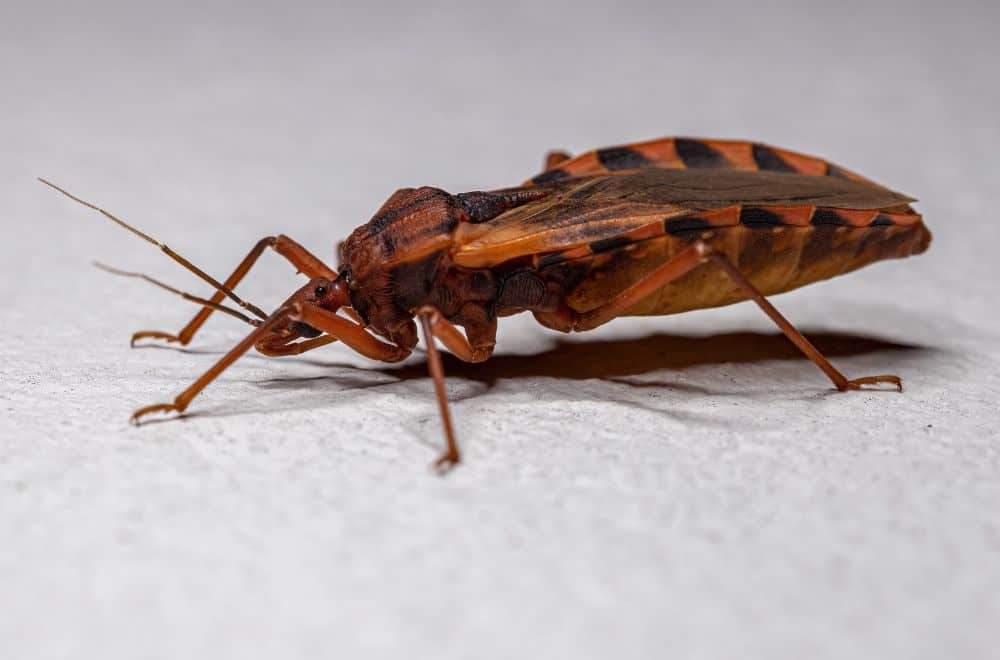California is undoubtedly among the most beautiful, fertile states in the US and is blessed with stunning scenery and an agreeable climate – but it is also home to more than just a few bugs and creepy crawlies that are capable of giving you a painful bite or sting.
Some are found in many other states, but a few are found only in California and some of the neighboring areas. And for anyone who wants to know more about what to look out for, in this post, we talk all about California bugs that bite and sting.
California Bugs that Bite
1. Bedbugs
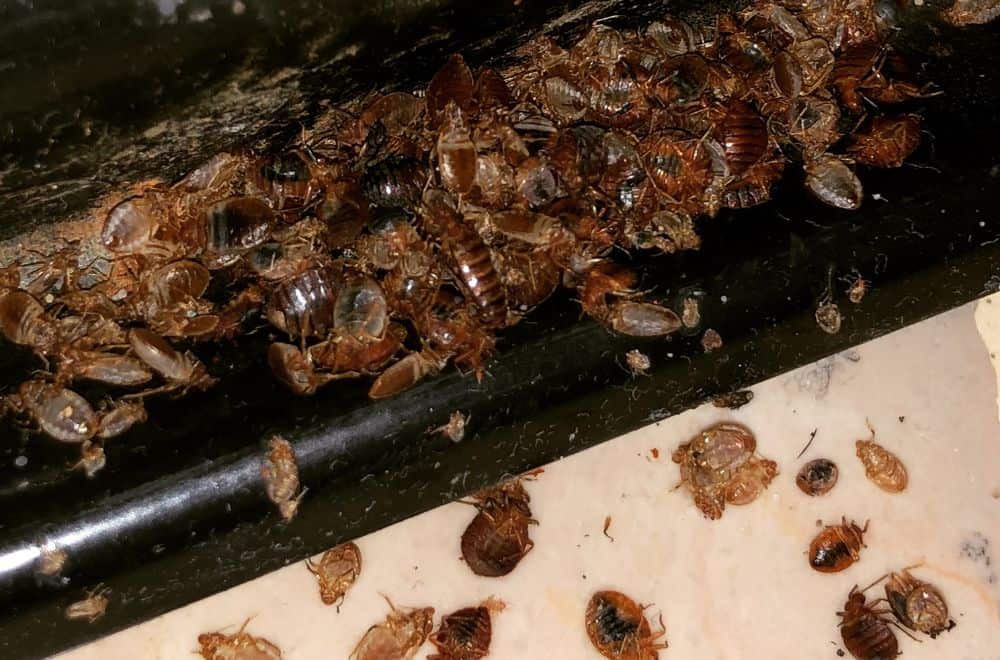
Bedbugs are tiny insects that like to hide in furniture crevices, mattresses and bedding – and they then come out and feed on our blood while we sleep, hence the name.
These ugly creatures are pretty gross, and they can leave us covered in irritating red bite marks, but they are not dangerous.
Bedbugs are prevalent in California and are often picked up when staying in hotels. You can then take them back home in your luggage.
You can get rid of them by using a steam cleaner on your bedding – and another trick is to give your luggage a good wash and then leave it out in the hot sun, which will cause the bugs to evacuate.
2. Conenose bugs – “kissing bugs”
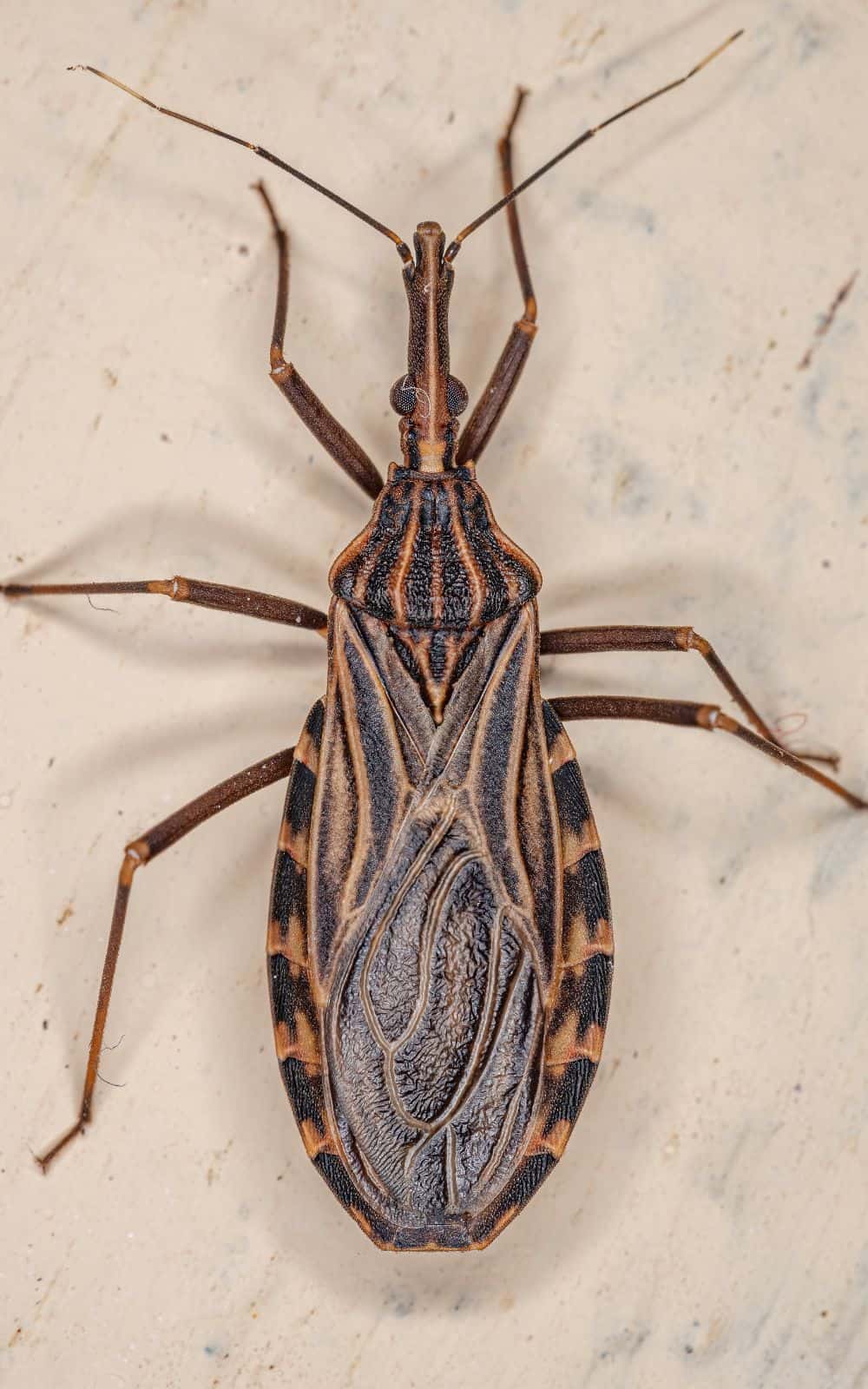
Also commonly known as kissing bugs, conenose bugs are tiny blood-sucking insects that are present in California and are most common in rural foothills and mountainous areas.
These critters are most notorious for being a vector for Chagas disease, an illness transmitted by the parasite Trypanosoma cruzi. This condition can lead to heart disease, but although it is common in rural Latin America, it is rare in the US.
However, some people may also suffer severe allergic reactions to conenose bug bites.
Conenose bugs can be recognized by the cone-shaped head that gives them their name as well as their dark brown or black body and their wings. They are active at night and are attracted to light, which may bring them into homes where they can bite people.
3. Fleas
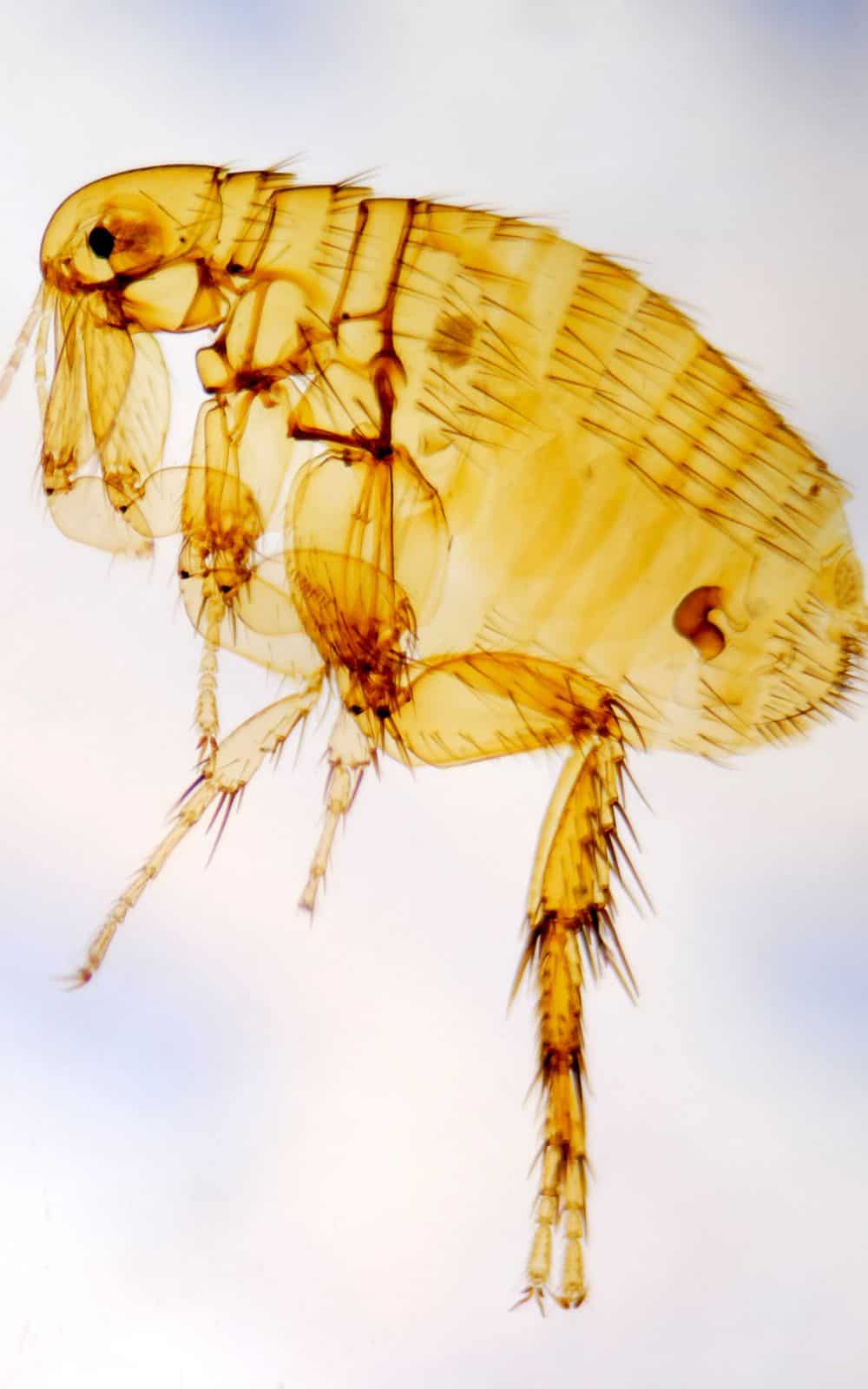
Fleas are tiny flightless jumping insects that feed on the blood of animals – as well as humans. They are present around the world, including in California, and they can live for months without feeding, which makes it difficult to get rid of them.
There are many species of flea, and most of them specialize in feeding on only one type of animal – so, for example, a flea that feeds on dogs will almost exclusively bite dogs, although they may sometimes bite humans too when no dogs are available.
Fleas are not usually considered dangerous, but fleas are a known vector for Yersinia pestis, the bacterium responsible for bubonic plague, one of the deadliest diseases in human history.
4. Mosquitoes
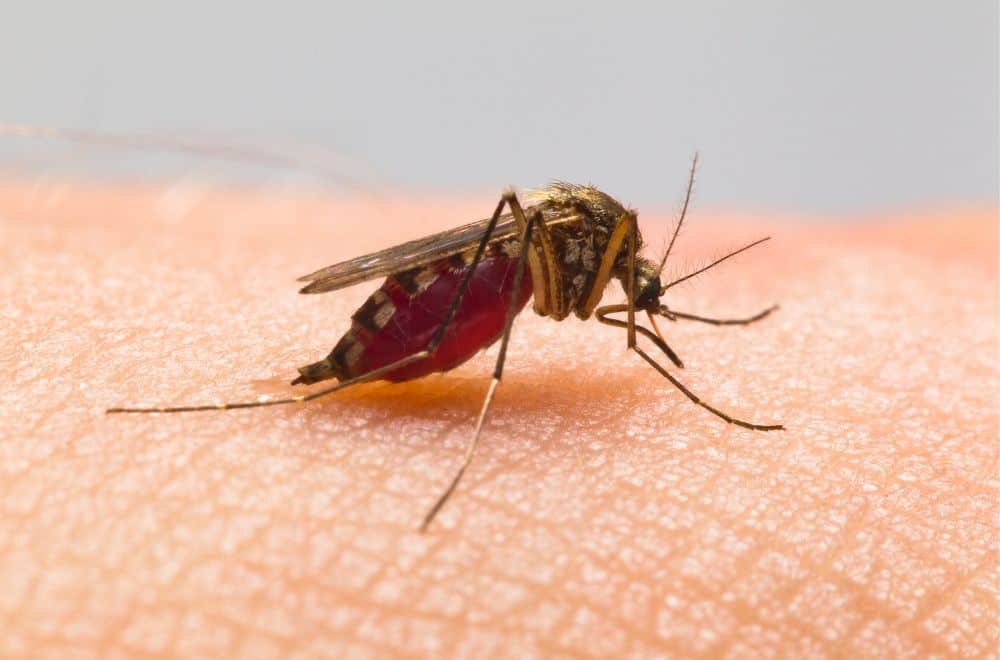
Like many parts of the world, California is home to mosquitoes, and in California, these annoying biting insects are present year-round.
Although native Californian mosquitoes are not considered dangerous, two invasive species – Aedes albopictus, the Asian tiger mosquito, and Aedes aegypti, the yellow fever mosquito – are becoming increasingly prevalent.
The Asian tiger mosquito has distinctive black and white stripes on its body and legs and can carry diseases such as yellow fever, dengue fever, chikungunya fever and zika virus.
The yellow fever mosquito can also spread dengue fever, chikungunya fever, zika virus, Mayaro virus disease and yellow fever. It can be identified by the black and white markings on its legs and a lyre-shaped marking on its back.
5. Buffalo gnats
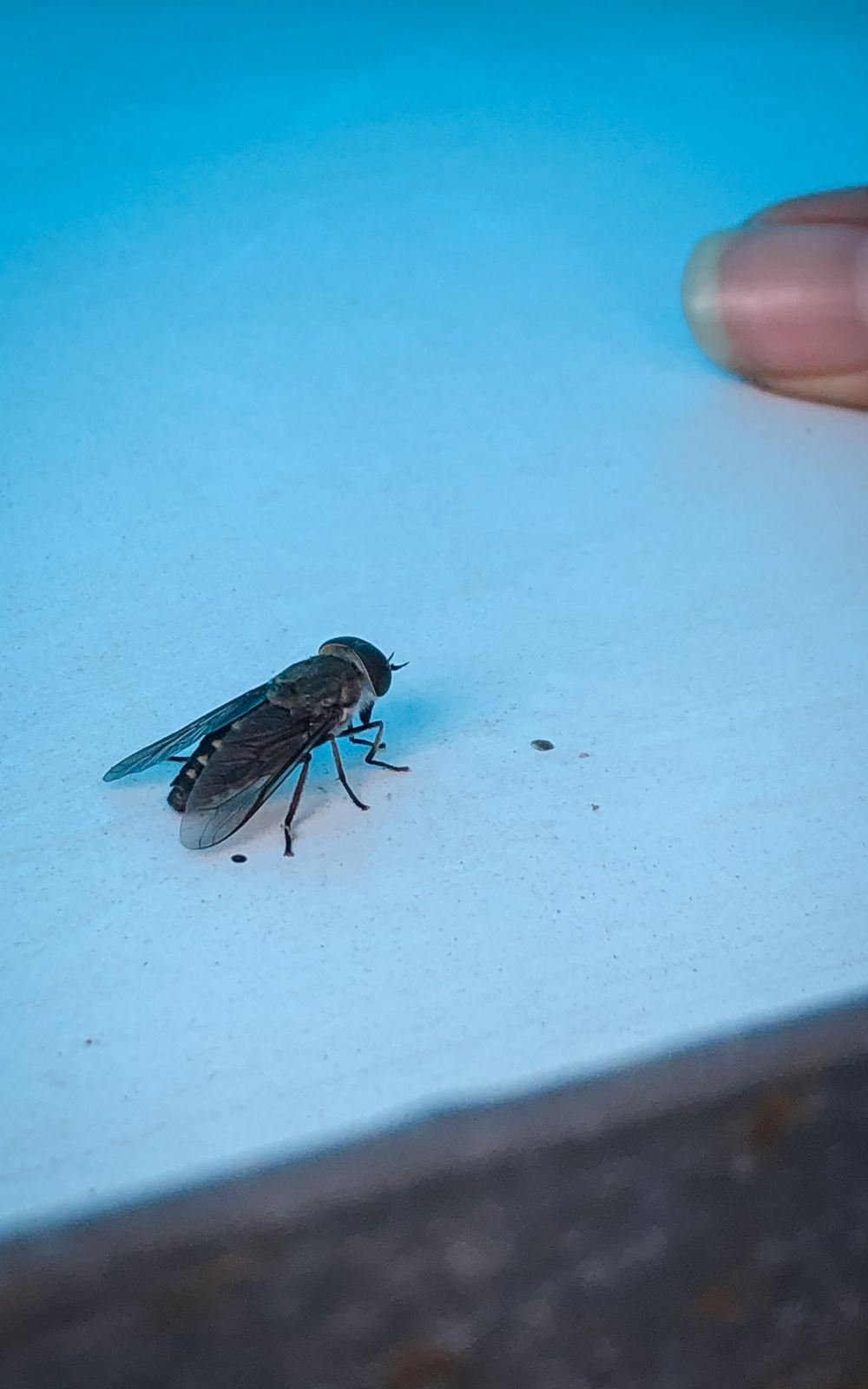
Buffalo gnats, also known as turkey gnats or sometimes just black flies, are tiny black flying insects with distinctive hump-shaped backs.
They are most commonly encountered in southern California but are now establishing themselves elsewhere in the state too.
They lay their eggs in moving water, which makes fountains or artificial waterfalls ideal breeding grounds.
An adult female can lay up to 500 eggs, and after first living in the water as larvae, they eventually hatch out and fly up looking for something or someone to bite.
6. Biting midges – “no-see-ums”
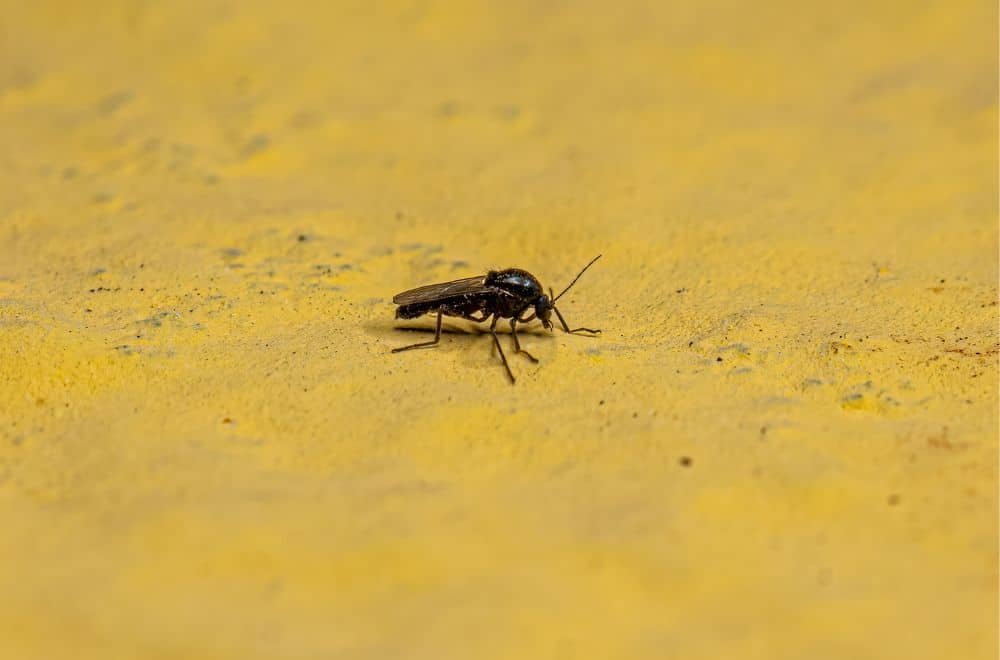
The term “biting midge” is used to describe any of a wide range of flying, biting insects belonging to the Ceratopogonidae family.
They are present around the world, and the ones found in California – where they are often called “no-see-ums” due to their minuscule size – are black critters that usually attack people in moist, grassy areas.
None of the species in California carry diseases, and they are considered a nuisance rather than anything else.
They need moisture to breed, so they may be attracted to your home if you over-water your lawn or don’t drain your potted plants.
7. Chiggers
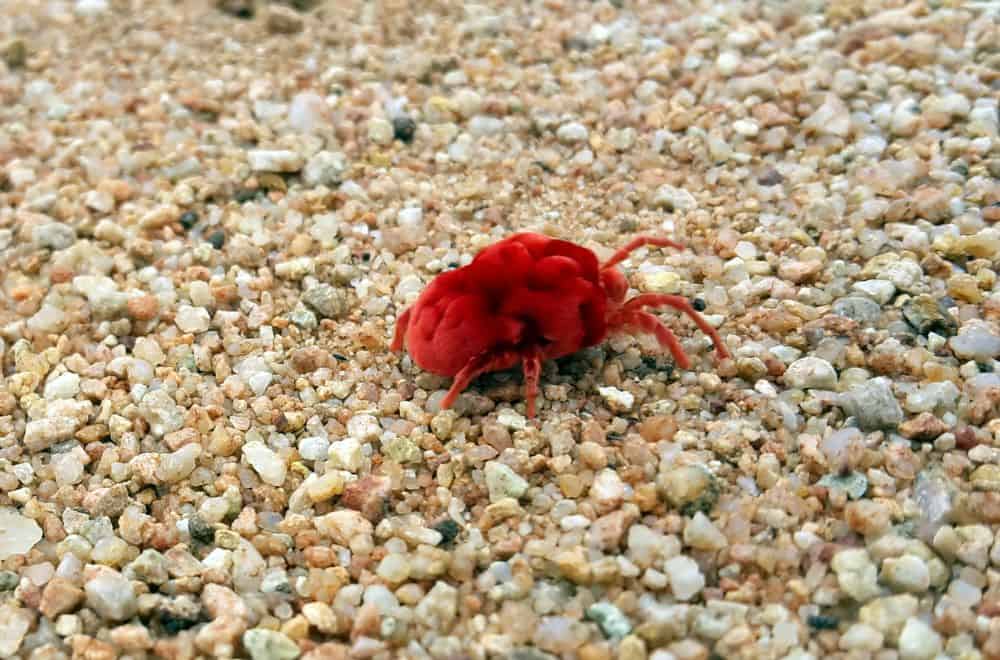
Known scientifically as Trombicula and commonly also called red bugs, berry bugs or harvest mites, chiggers are the larval form of a type of mite.
Chiggers are almost microscopic, and at this stage in their lifecycle, they attach themselves to humans or other animals and feed on their skin (but not blood), causing an intense itch.
These creatures live in grass or brush, so you’re most likely to pick them up when engaging in outdoor activities.
If you are bitten, there’s nothing to worry about since chiggers are not dangerous. However, you will probably need to apply some kind of medication to relieve the itching.
8. Mites
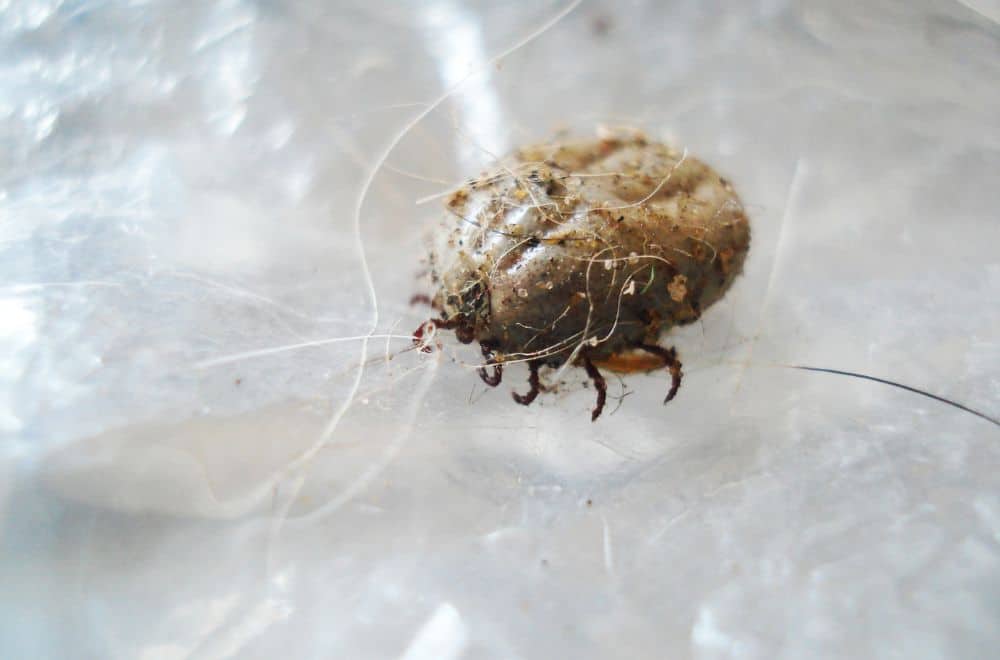
Besides chiggers, which are the larval stage of one particular type of mite, other species of mite are present in California, and some can bite.
Mites are arachnids, which means they are related to spiders, and many of the biting ones specialize in feeding on a certain type of animal.
For example, the tropical rat mite prefers to feast on rats – as you may guess from the name – but if you rid yourself of a rat infestation, they may turn on you instead. Bites can be incredibly itchy, and this may even lead to an infection if you scratch too vigorously.
Many species of mite are so small you can’t even see them with the naked eye, and some species can cause diseases such as typhus, scabies and mange.
9. Spiders
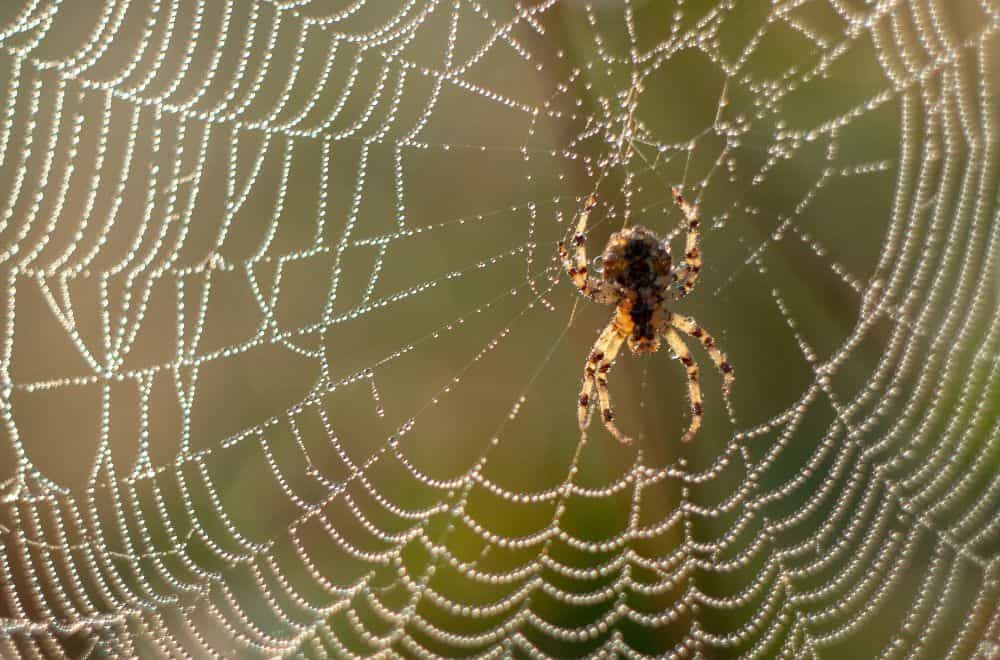
California is home to at least 66 species of spider, although most are non-poisonous. If you are bitten by one of these, you may suffer from swelling, redness, pain and itching for a couple of hours up to a day or two. After this, the symptoms will disappear.
However, something to be much more wary of is the highly venomous black widow spider, a species that is also present in California.
These spiders like to hide in dark areas and have bulbous bodies with red markings. They can behave aggressively when threatened, and their bites can sometimes be fatal, so if you are bitten, you should seek medical help immediately.
10. Ticks
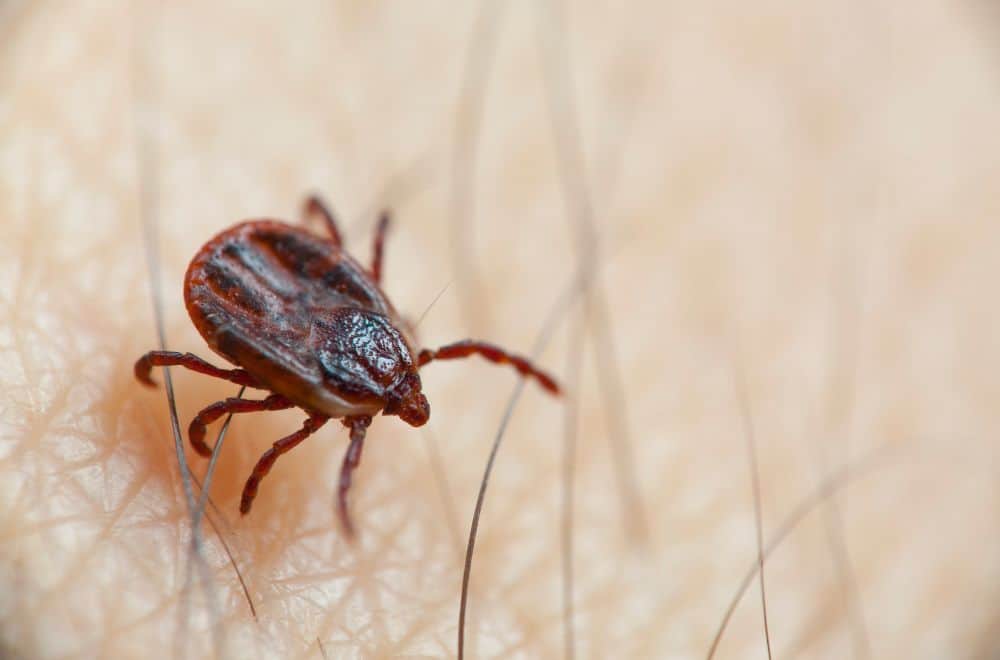
Among the most innocuous but potentially dangerous creatures on our list are ticks.
These parasitic arachnids are related to spiders and mites and try to attach themselves to your skin. Then, when they do, they make their way to a warm, moist part of your body before biting into you to suck your blood.
The problem with ticks is that they can carry some pretty nasty diseases, sometimes with life-changing consequences.
The good news is that the most serious tick-borne diseases are rare in California, although it’s still possible to contract Lyme disease, an unpleasant condition that’s best avoided.
If you are bitten by a tick, don’t pull it off or part of its mouth may become detached, causing an infection. You should either let it eat its fill and drop off naturally or, preferably, twist it off using a specialized tick removal tool.
11. Lice
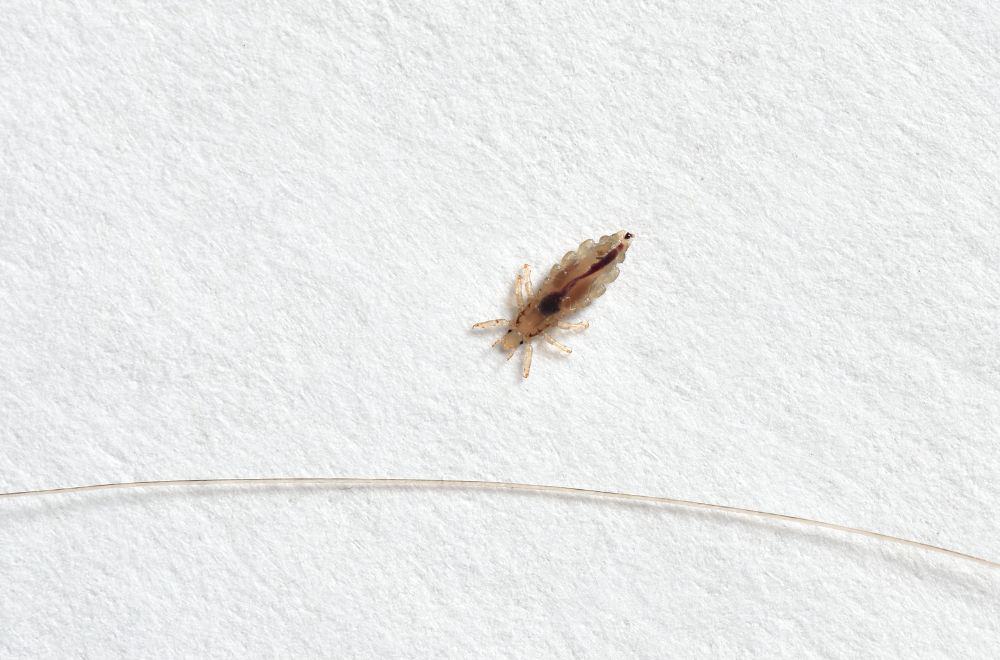
Lice are various tiny parasitic insects that attach themselves to a host and feed on its blood or skin, and various types of human lice exist and are present in California.
They can be divided into three types: body lice, headlice and pubic lice.
Body lice are only usually found in people who can’t or don’t wash regularly. You may catch them by coming into contact with someone who has them, but you can easily rid yourself of them through regular washing.
Headlice, on the other hand, are most common in children since they are spread through contact at school. Pubic lice – also known as crabs – are most commonly spread through sexual contact.
Both headlice and pubic lice need to be treated since they won’t go away on their own.
12. Killer bees
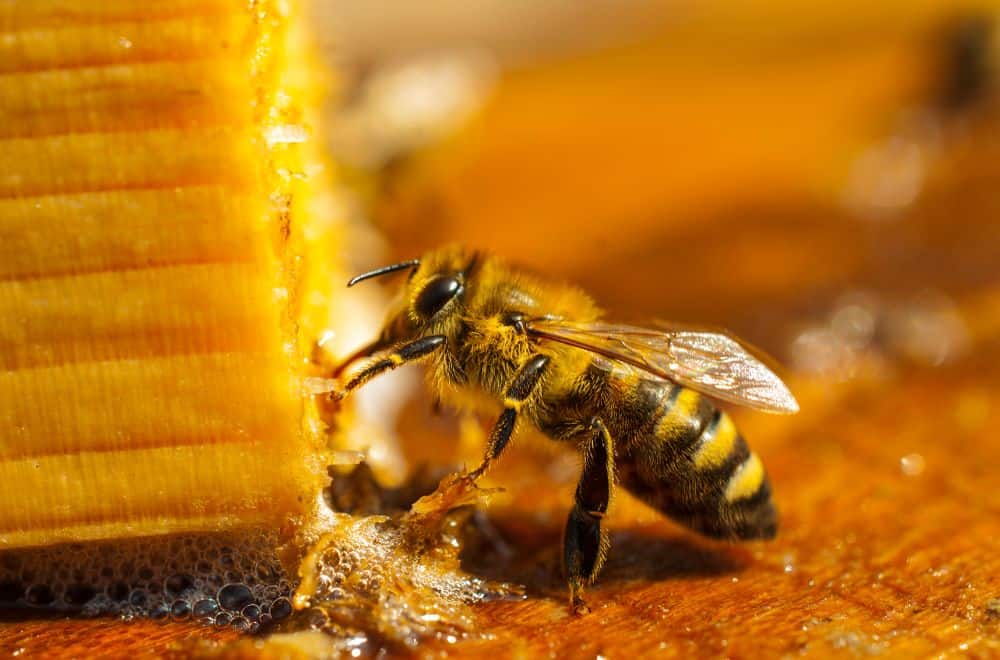
The so-called “killer bee” is a hybrid of the western honey bee and the East African lowland honey bee. They are also known as Africanized bees and are now present in California.
The problem with this hybrid species is that it is much more aggressive than “normal” bees and will attack in great numbers.
The stings are particularly painful but are no more likely to cause allergic reactions than regular bee stings. However, due to their aggressive attacks and the large amount of venom injected with each sting, they have been responsible for many more deaths than other bee species.
13. Wasps and hornets, giant black wasps, western yellow jackets
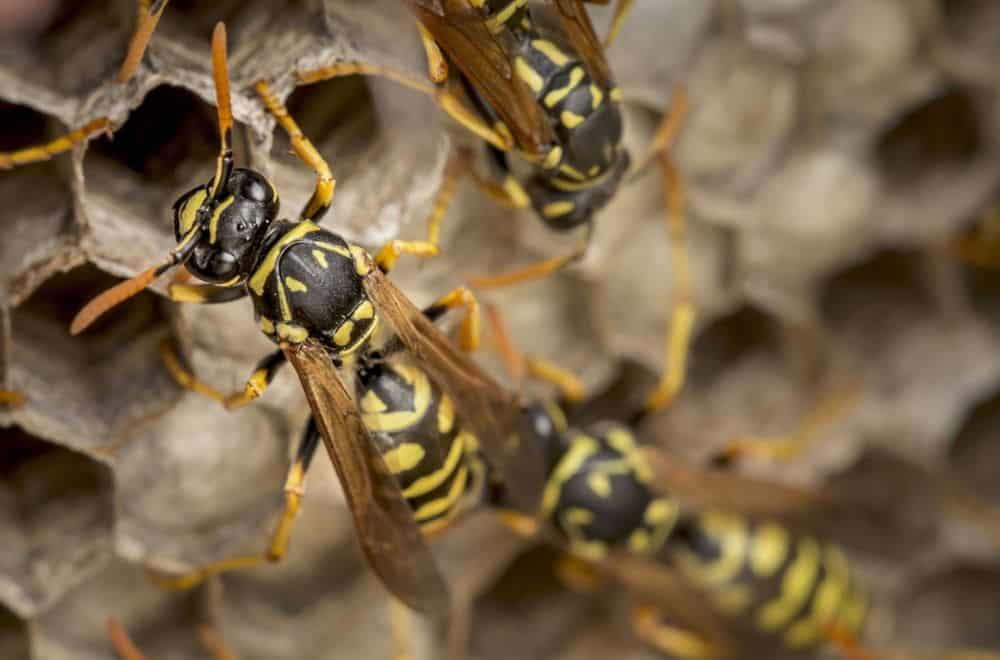
California has its fair share of wasps and hornets, and species present elsewhere in the US are also found there. Furthermore, there are a couple of species to be especially wary of.
First, there’s the giant black wasp, and its name gives you a good idea of what to expect since they’re big and they’re black.
They can grow up to an inch and a half in length, and the stings can be especially painful.
Western yellow jackets are another type of wasp to look out for in California. They build distinctive hanging nests, sometimes on or inside buildings, and they will defend them aggressively.
Unlike bees, wasps and hornets don’t lose their stingers and die when they sting you, so a single insect can inject you with painful venom multiple times.
14. Ants, fire ants and harvest ants
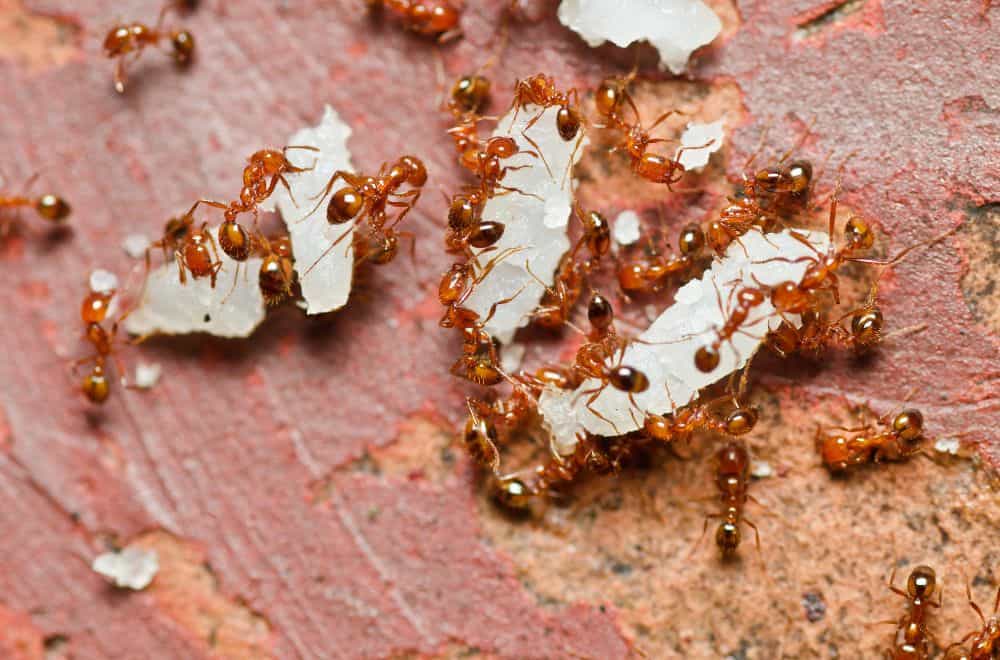
Everyone knows what an ant looks like, and in California, there are several types that can give you a nasty sting.
Fire ants are distinctive for the red color that gives them their name, and they are best avoided since their sting is painful. They attack by clamping their jaws onto your skin and then injecting their stinger into you, often multiple times.
After being stung, you may develop a pus-filled blister that can last for up to 10 days. When the blister disappears, it can also leave a scar.
Certain species of harvester ant are also found in California. These ants are often small but pack a painful dose of venom for their diminutive size.
15. Rove beetles
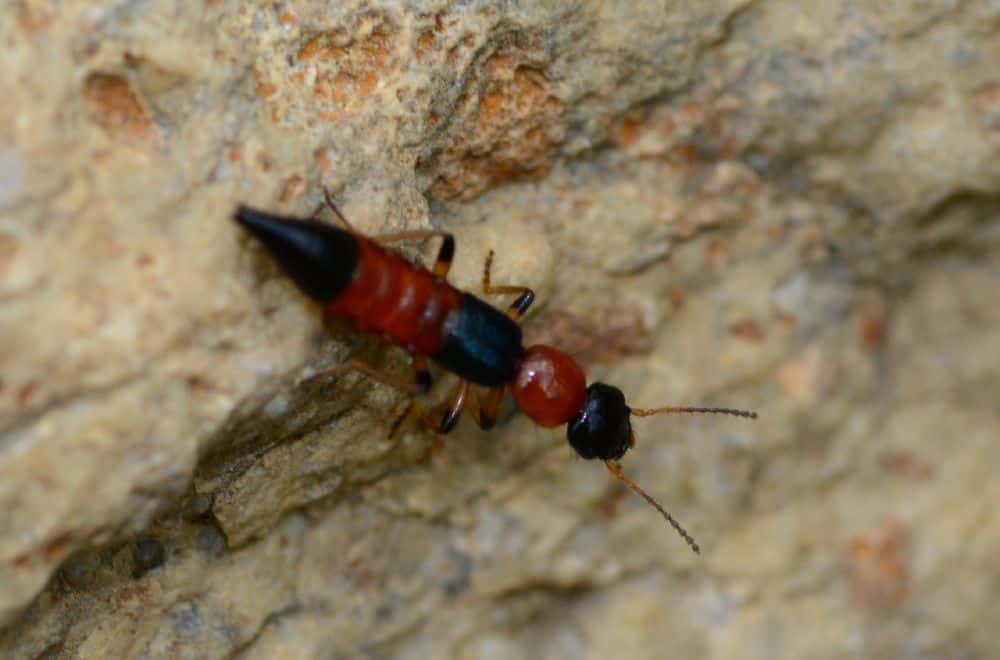
If you see an insect that looks something like a cross between an earwig and an ant, there’s a good chance you’re looking at a rove beetle – and you should give them a wide berth because they possess a powerful bite.
These insects can’t fly and will react aggressively when threatened, rearing up and baring their mandibles at you if you try to poke them.
After biting, it also releases a foul yellow liquid that may leave you feeling nauseous.
However, if you leave them alone, they won’t bother you – and they are also beneficial to your garden since they will eat pests like slugs and snails.
At the same time, they are often found in compost piles and in the soil, so make sure you always wear gloves when gardening in California.
16. Scorpions
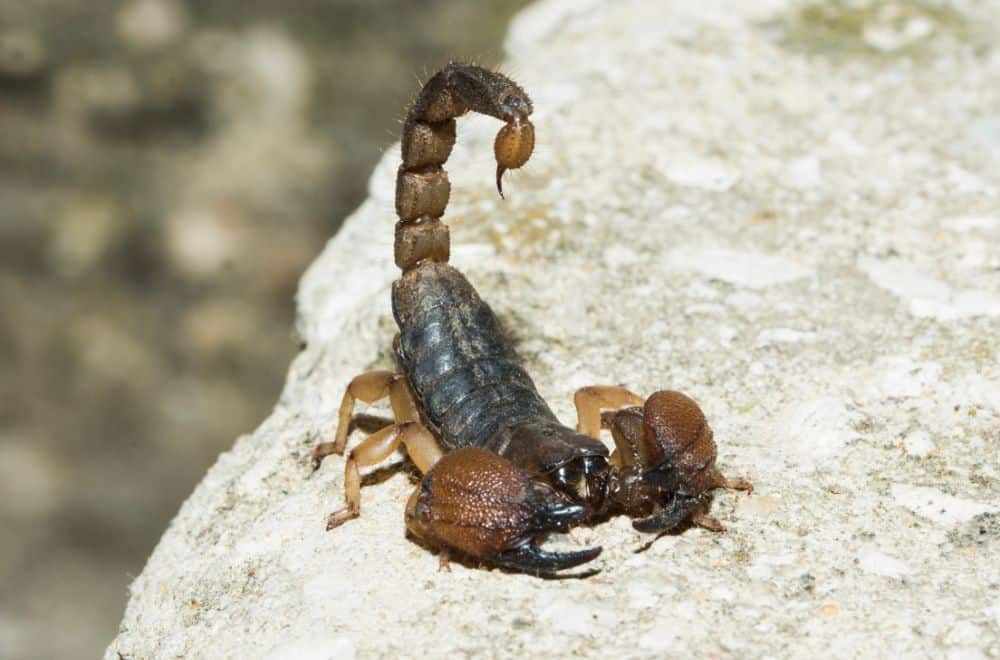
Finally, there are the scorpions – and although they’re not usually considered “bugs”, they’re worth mentioning since there are several species in California, and most people are aware that they possess a powerful sting.
At least 10 species are present, although none will seek confrontation with humans unless they are threatened. However, to minimize the chance of being stung, you should always be careful where you place your hands or step with bare feet, especially in desert areas.
A few species to be careful of
As we have seen, California is not short of bugs that can bite or sting, but many of them are relatively harmless or at least not considered dangerous.
However, there are also one or two that can cause a lot of pain and distress, and of those species, visitors to the state and residents alike would do well to steer clear.
